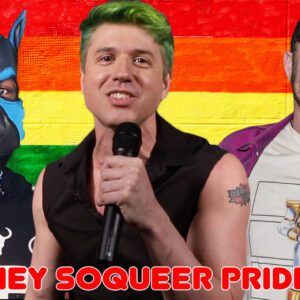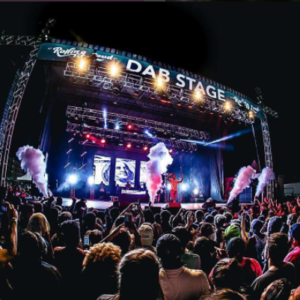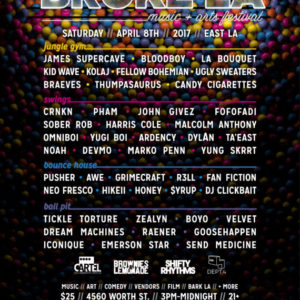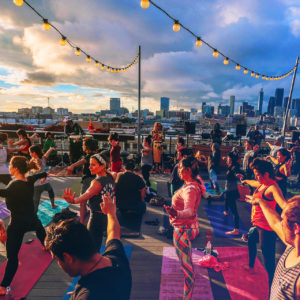 View Winners →
View Winners → 

EDC
Many may be under the impression that the character of those who go to raves are typically wild irresponsible college students who half dress, party, do drugs and hook up. While there might be a grain of truth to those stereotypes, it’s uncommon knowledge that ravers, as they’re called, actually have a community and take care of each other.
First of all, what is a rave? According to iHeartRaves, raves are large dance parties with DJs and sometimes live performers. At these parties, a common form of music played is Electronic Dance Music or EDM, House Music, etc.
https://www.instagram.com/p/BtblZBeBkwk/
“Speaking from personal experience, I can be as uniquely me as I want to be and regardless if I know the people me are not, they are cheering me on,” said Anisa Moore-Dunkley, college student and raver.
According to Grinnell College, rave culture created a community around the events of a rave. This community went by the ideology of peace, love, unity, and respect (PLUR). According to the rave community, there is also an additional R in this ideology: responsibility.
Where did it all begin? According to Rolling Stone, rave culture was based on four UK DJs: Nicky Holloway, Paul Oakenfold, Danny Rampling and Johnny Walker. More specifically, the concept was based on their trip to Ibiza, a party hotspot. A great reference to the feeling and phenomenon is the 2015 Mike Posner song “I Took A Pill In Ibiza,” a song inspired by the parties on the island. People at these parties would feed off each others energy with or without the use of substances. It was after their trip that the DJs brought the Balearic parties back to the UK and spread its popularity.
It was in the early ‘80s when this movement transitioned into the U.S. Around this time disco music was a popular genre in the clubs. These clubs were feeding into the rave setting by making their music build off of the DJ-center which controlled the rhythm of the bass, drum machines and electronic sounds, according to Grinnell College. During this time, raves were considered illegal and were held in underground or at secret locations.
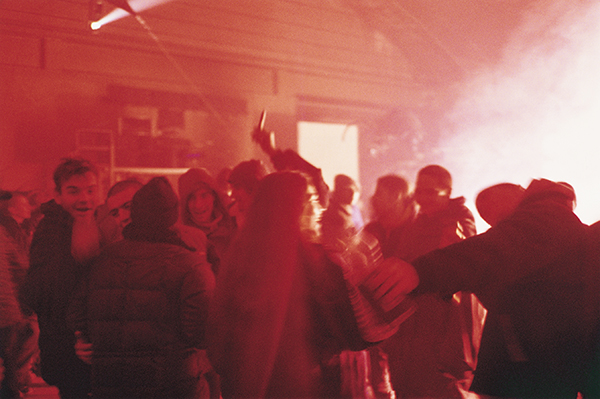
Vinca Petersen, No System, 1999. Courtesy the artist
As raves grew more popular, so did attention by local authorities. Moral panic struck as these parties were being shut down for illegal use of warehouses and drug use of attendees. Mainstream society struggled accepting the new rave culture until it seemingly dissipated.
The rave movement didn’t actually disappear like authorities may have wanted. It may have changed its form with association to the word ‘festival.’
According to the Guardian, many tried to draw this new line of distinction between ‘90s rave culture and the ‘newly evolved’ rave culture we know today; that line being the expanded genre of music played at these rave style music festivals. And it worked out a lot better since there is less stigma around festivals. One of the most popular festivals today that broke out of this trend of events is the infamous Electric Daisy Carnival.
https://www.instagram.com/p/BsgOP1Rh–I/
The rave movement has changed since it first started. For starters, parties used to more accessible or inexpensive. Since the festival trends, tickets can get as expensive as $50 to thousands of dollars on entrance, travel, clothes, etc. These parties used to be promoted by word and now spread through large-scale businesses looking to make a huge profit.
In the past, authorities policed the use of LSD at these parties. The common drug today is molly, but there are stricter policies and people who are less inclined to use drugs. For those that did want to use, they knew they were kept under the solidarity of the PLUR guidelines, meaning others would take care of them and everyone would still have a good time. But, with some attendees ending up in the hospital and the lasting effects of drug use at raves, the labeling of ravers as deviant arose once again.
“The majority of the people I know that go to raves, go there with the intention to use drugs, so when I hear people talking about those stereotypes, I am not quick to disregard them,” said Anthony Meza, 20, college student and raver.
“Despite all this, I do know that many if not most of the people that attend raves are there because they really enjoy the music and the artists.”
These ‘deviant’ images people think of stem from the ‘90s which consisted of drug induced attendees kandi trading, or exchanging beaded bracelets with other attendees (the madness of a wild party). The only difference today is the style. Meza suggests combatting stereotypes by encouraging those who pass judgement to attend an event and experience a rave for themselves.
Perhaps with the experience people can see the community is still there for each other, still following PLUR, and still looking to have a good time with or without the influence of drugs. At its peak in present day, raves have been able integrate more community-oriented parties regardless of who is hosting, making money, or using. Today, people spend hours still love getting lost in xeno.








































































































